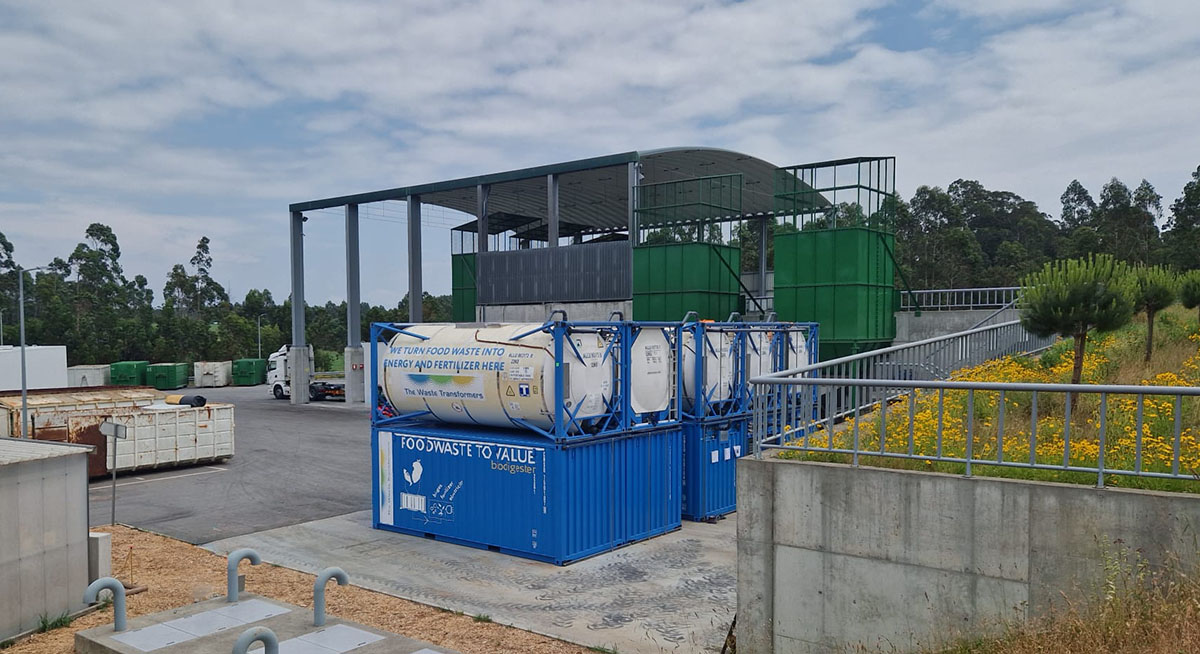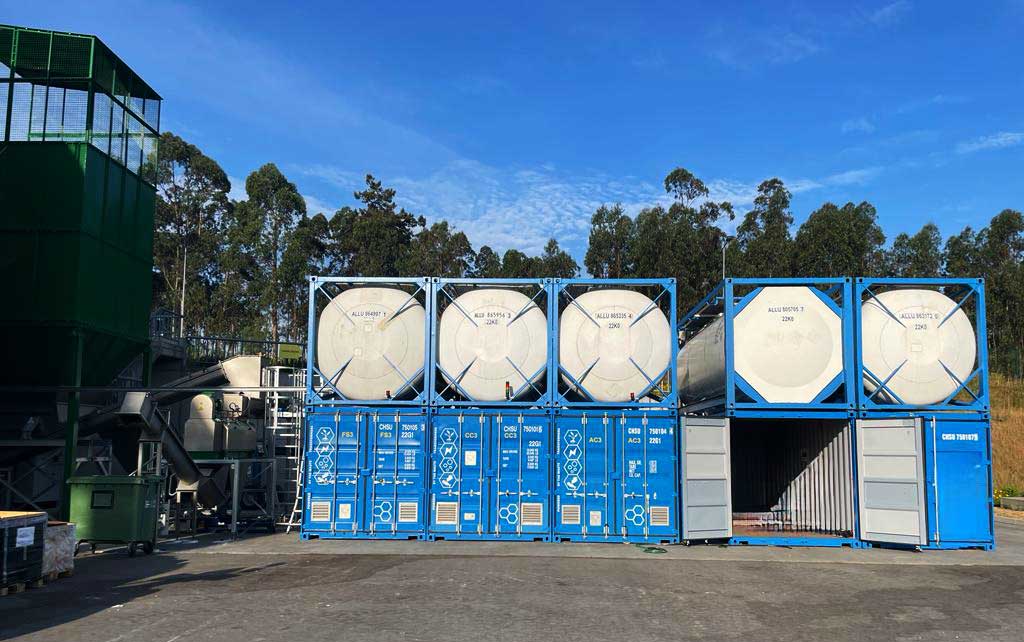The Waste hub Installation
Over 40% of general household waste comprises food waste. When this food waste is mixed with regular waste, it ends up in landfills or incinerators, culminating in the release of harmful methane gas into the atmosphere.
For this project located in Southern Europe, a five digester Waste Transformer runs at a municipal waste collection hub. At this facility, general household waste which contains a mixture of non-organic waste and food waste is first mechanically separated before it is transformed in this biodigester. The mechanical separation process effectively separates the food waste from the rest of the waste stream before it enters the Waste Transformer.
The Waste Transformer converts the food waste into biogas, to generate electricity and heat. This process not only mitigates the environmental impact of methane emissions from landfill, but also allows to process mixed waste streams due to the mechanical sorting of the food waste streams.
By deploying the Waste Transformer, the local municipality achieves the twofold benefit of managing mixed waste while capitalizing on the energy generation from food waste streams.
This sustainable approach ensures that methane emissions are effectively curtailed, reducing the impact on the environment.

Food waste has substantial environmental, social and economic impacts. 8%-10% of global greenhouse gas emissions are associated with food that is not consumed.
How it works?
A Waste Transformer is a pioneering solution in food waste management and sustainable energy generation.
Step 1: Waste collection and sorting
General household waste, including both regular waste and food waste, is collected by the waste management company. The food waste is mechanically sorted from the rest of the waste stream before it enters the Waste Transformer.
Step 2: Anaerobic digestion
Once the sorted food waste enters the Waste Transformer, it undergoes a biodigestion process. Within the biodigester, microorganisms break down the organic matter present in the food waste. This biological breakdown produces biogas and organic fertilizer.
Step 3: Biogas utilization
The biogas produced during digestion is a valuable resource as renewable energy. Both electricity and heat is generated from the biogas. The energy generated powers the same site.
Step 4: Reducing environmental impact
By converting food waste into biogas and subsequently into electricity and heat, the Waste Transformer effectively addresses several environmental concerns. Firstly, it drastically reduces the amount of food waste destined for landfills or incinerators, thereby minimizing the emission of harmful methane gas. As methane is a potent greenhouse gas, this reduction has a positive impact on mitigating climate change. Secondly, the utilization of biogas for electricity and heat generation reduces the reliance on fossil fuels.
This Waste Transformer supports the new approach for this organization to process organic waste streams separate from other waste streams. By converting the food waste into renewable energy, it reduces the energy costs and drastically reduces the impact on the local environment.

